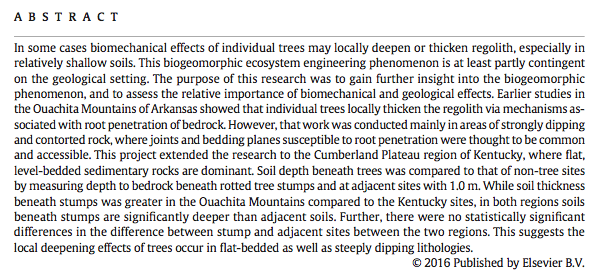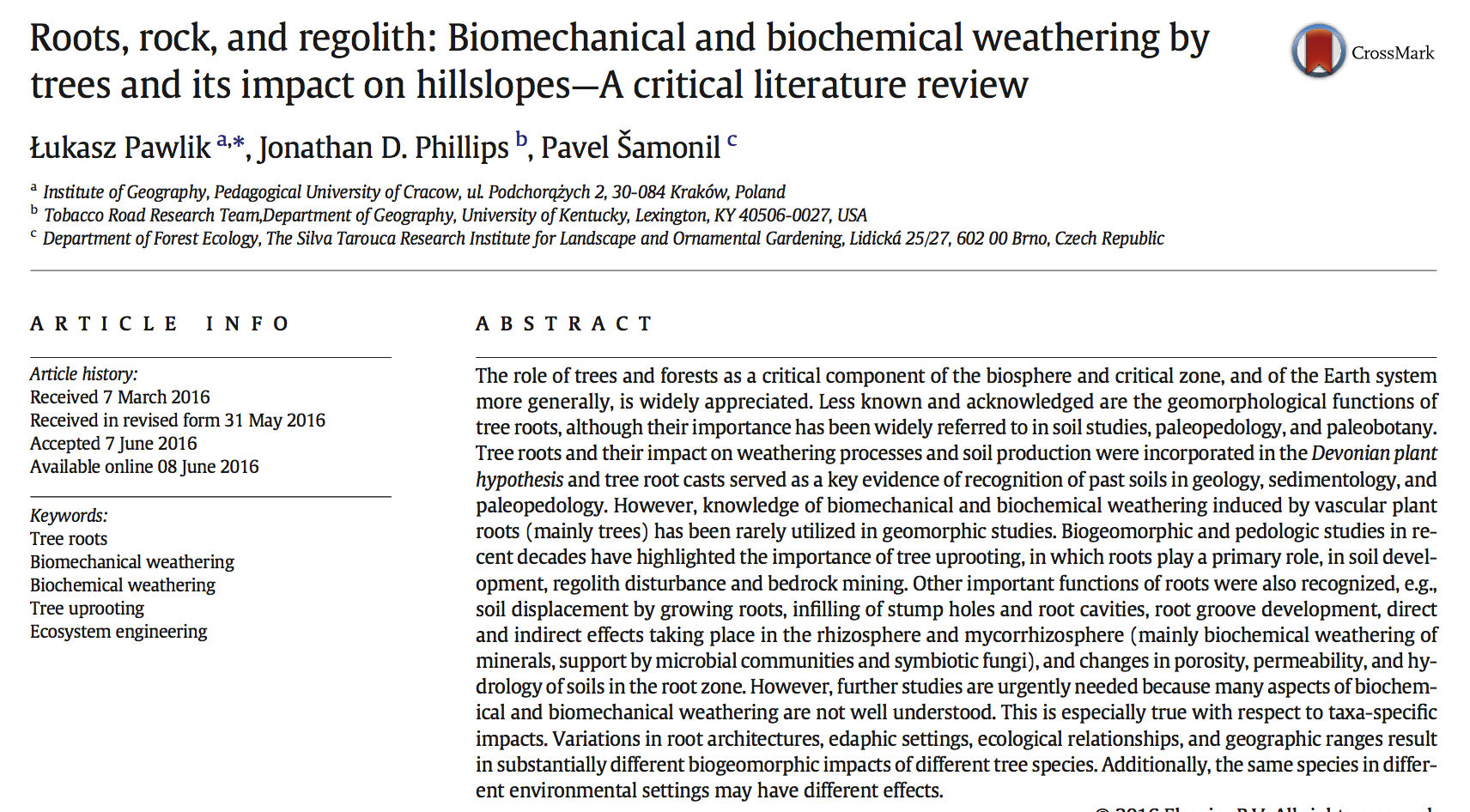SOIL DEEPENING BY TREES
Where soils are relatively shallow, tree roots penetrate into the underlying bedrock through joints and fractures and promote weathering by funneling water into the rock, and facilitating chemical weathering. In addition to these processes, mass displacement by tree growth and bedrock "mining" by tree uprooting help deepen soils and regoliths. While this ihas been demonstrated in several studies, it was unclear the extent to which these processes occur where the bedrock is flat-bedded sedimentary rocks, which offter fewer vertically oriented joints for root access. Soil deepening by trees and the effects of parent material addresses this question (yes, the same general processes do occur in horizontally-bedded rocks). The paper, just out in Geomorphology (vol. 269, p. 1-7) by (mostly) Michael Shouse and myself, also provides some heretofore unprecedented spatial resolution on the spatial variability of soil & regolith thickness attributable to effects of individual trees. The abstract is below.










